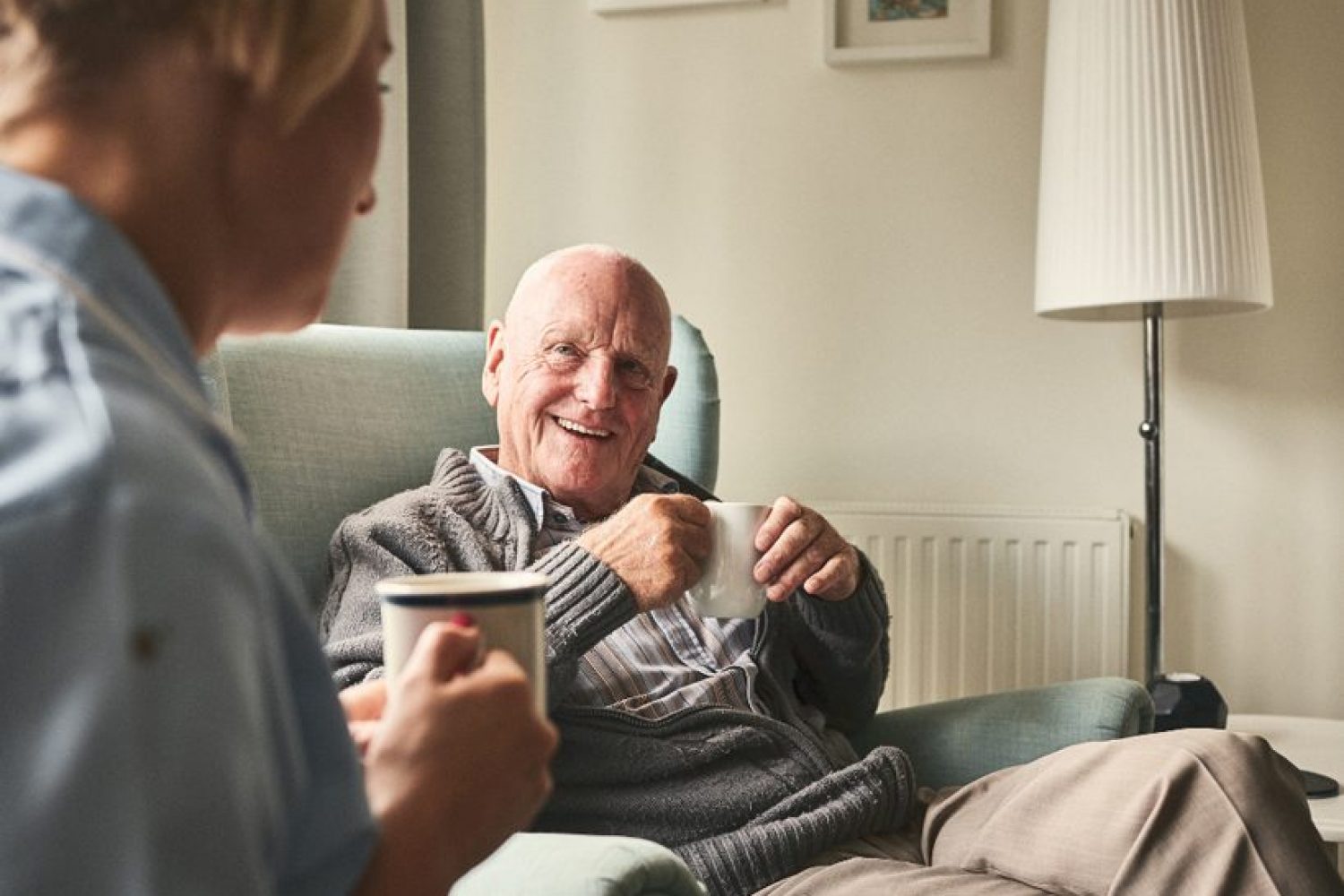- Article
- Jordan Cantley
A challenging environment by it’s very nature has to be able to withstand extreme forces and pressures at times, which can often mean that the furniture and furnishings available for these interiors

Today’s care homes are far removed from the cold, clinical institutions of the past where the elderly and infirm may have been well cared for, but in an atmosphere that was far from homely. We now know that the very décor and design of a care home can have a strongly positive or negative effect not only on psychological health but on cognitive function, memory retention, mobility and life expectancy.
One 2017 study reported that 60% of people in care homes do not get any visitors – this was three years before Covid-19 forced care homes to place restrictions on visitors.
Loneliness has a massive impact on health. The Campaign to End Loneliness organisation informs us that loneliness and isolation can have negative health effects, including
– increasing the likelihood of mortality by 26%,
– increasing the risk of high blood pressure, developing coronary heart disease and stroke,
– affecting cognitive function among older adults,
– affecting sleep quality.
But how can residents be lonely in a care home where there are other residents and staff? And how can we design care homes that prevent loneliness?
First of all, there’s no one quite like the family and friends you’ve known from all those years ago, especially if your memory isn’t what it used to be. Spaces where you can meet them as if welcoming them into your own home with a degree of privacy will make visits more enjoyable both for residents and visitors.
Dividing areas into zones for specific activities can also help residents feel more included. A single day room with a television constantly switched on in the corner will deter residents who don’t like watching TV or would rather have a conversation or read a book in silence.
Create clearly-defined areas where a wide range of activities can be comfortably enjoyed by all residents without impinging on each other.
Colours are known to have an effect on moods. Brighter, warmer colours used in social areas can potentially improve cognitive function and communication, while cooler colours should be used for more personal areas such as bedrooms to promote restfulness and calm.
In the care environment, colours have also been shown to promote memory. Having clearly defined colour zones for various activities can help residents with dementia or memory impairment.
Contrast is as important as colour. Residents with impaired vision will depend on contrast to differentiate between objects and contrasting piping on upholstery will help them to define the outline of a chair. Walls and floors should also be picked out in contrasting colours as using the same can confuse some residents with dementia.
Biophilia (literally “affinity with the natural world”) is being increasingly recognised as a positive contributor to the wellbeing of office workers. How much more so for residents, who don’t have the walk or drive home at the end of each day to enjoy nature!
Biophilia can be expressed in living plants (a living wall is particularly effective as it can give the feeling of being surrounded by nature), natural materials used in furniture and furnishings (wood effects and natural toned fabrics), and plenty of natural light, particularly if it comes from windows with an attractive view onto the outside world.
The importance of natural light cannot be overemphasised. Daily exposure to daylight and night darkness is essential to maintaining the body’s Circadian rhythm which regulates the sleep-wake cycle. If this cycle is broken, it can affect cognitive ability, digestion and mood, and affect medical conditions such as diabetes and heart disease.
Furncare are your ideal partners for designing a happy, healthy care home that is a pleasant working environment for staff, a home from home for residents and an attractive place for friends and family to visit.
If you’re looking to refurbish or upgrade an area of your care home, or undergo a complete refit, contact us today for friendly, impartial and professional advice.
Tackling Loneliness
https://www.campaigntoendloneliness.org/threat-to-health/
https://www.bettal.co.uk/tackling-problem-loneliness-care-homes/
Donate to the Care Workers Charity and make a difference.
| Cookie | Duration | Description |
|---|---|---|
| cookielawinfo-checkbox-analytics | 11 months | This cookie is set by GDPR Cookie Consent plugin. The cookie is used to store the user consent for the cookies in the category "Analytics". |
| cookielawinfo-checkbox-functional | 11 months | The cookie is set by GDPR cookie consent to record the user consent for the cookies in the category "Functional". |
| cookielawinfo-checkbox-necessary | 11 months | This cookie is set by GDPR Cookie Consent plugin. The cookies is used to store the user consent for the cookies in the category "Necessary". |
| cookielawinfo-checkbox-others | 11 months | This cookie is set by GDPR Cookie Consent plugin. The cookie is used to store the user consent for the cookies in the category "Other. |
| cookielawinfo-checkbox-performance | 11 months | This cookie is set by GDPR Cookie Consent plugin. The cookie is used to store the user consent for the cookies in the category "Performance". |
| viewed_cookie_policy | 11 months | The cookie is set by the GDPR Cookie Consent plugin and is used to store whether or not user has consented to the use of cookies. It does not store any personal data. |